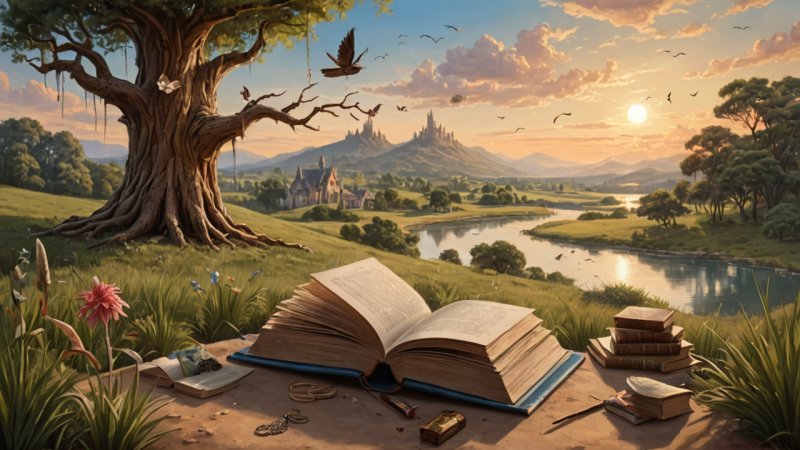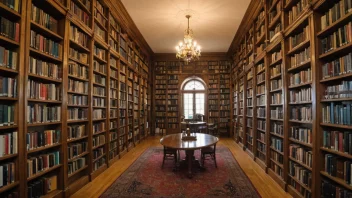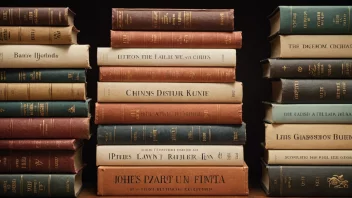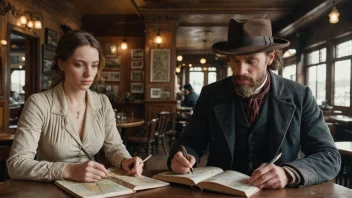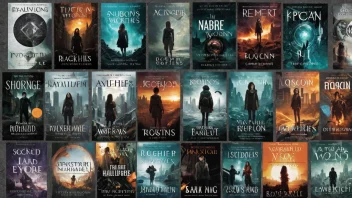Classic literature has a unique way of capturing the essence of human experience, often delving deeply into the realms of dreams and aspirations. Throughout history, writers have explored the ambitions, desires, and hopes that drive individuals, reflecting the complexities of society and the human condition. This article examines key works of classic literature that portray the pursuit of dreams, the obstacles encountered, and the ultimate realization or disillusionment that can arise. From the lofty ideals of characters in the Romantic era to the stark realities faced by figures in modernist texts, the exploration of dreams and aspirations serves as a vital theme in understanding both individual narratives and broader societal contexts.
The Romantic Ideal: Dreams of Perfection
The Romantic period, spanning from the late 18th to the mid-19th century, is characterized by a profound emphasis on individualism, emotion, and the pursuit of ideals. Authors like William Wordsworth, John Keats, and Mary Shelley encapsulated the spirit of dreaming big and striving for perfection, often against the backdrop of nature and personal introspection.
Wordsworth and the Nature of Aspiration
In Wordsworth's poetry, the connection between the human spirit and the natural world often reflects the poet's dreams of transcendence. In pieces like "Tintern Abbey," Wordsworth expresses his aspirations for spiritual growth and connection with nature, suggesting that dreams are not merely personal but universal experiences that bind humanity.
Keats and the Aesthetic Pursuit
John Keats, on the other hand, explores the idea of beauty as an aspiration in works such as "Ode on a Grecian Urn." His reflections on the tension between the ephemeral nature of life and the eternal beauty captured in art reveal a yearning for permanence and the ideal. Keats's dreams are rooted in the desire for artistic immortality, encapsulating the paradox of pursuing dreams that may remain forever out of reach.
Realism and the Disillusionment of Dreams
As literature evolved into the Realist movement in the late 19th century, the portrayal of dreams began to shift. Writers such as Gustave Flaubert and Leo Tolstoy focused on the harsh realities of life, often highlighting the disparity between aspirations and the societal constraints that hinder personal fulfillment.
Flaubert's "Madame Bovary" and the Tragedy of Aspiration
In Flaubert's "Madame Bovary," the protagonist, Emma Bovary, embodies the conflict between her romantic dreams and the mundane realities of provincial life. Her aspirations for love, wealth, and excitement lead her into a spiral of discontent and ultimately despair. Flaubert's critique of the bourgeois society and its limitations serves as a poignant reminder of how dreams can be both a source of inspiration and a catalyst for tragedy.
Tolstoy's Search for Meaning
In contrast, Leo Tolstoy’s works, particularly "Anna Karenina," delve into the complexities of personal aspirations within the confines of societal expectations. Anna's pursuit of love and happiness leads to her tragic downfall, emphasizing the intricate dance between individual desires and the moral fabric of society. Tolstoy's exploration of dreams often reflects a quest for deeper meaning, making the reader question the value and consequences of their own aspirations.
The Modernist Perspective: Fragmentation and New Aspirations
The Modernist movement of the early 20th century brought about a radical shift in literary styles and themes. Authors like Virginia Woolf and F. Scott Fitzgerald introduced new narrative techniques and explored the fragmented nature of human aspirations in an increasingly complex world.
Woolf's Stream of Consciousness
Virginia Woolf’s works, particularly "Mrs. Dalloway," utilize the stream of consciousness technique to convey the inner thoughts and aspirations of her characters. Through Clarissa Dalloway, Woolf captures the fleeting nature of dreams, illustrating how societal pressures and personal experiences shape one's aspirations. The novel reflects a modern struggle with identity and the quest for fulfillment amidst the chaos of post-war society.
The American Dream in Fitzgerald's "The Great Gatsby"
F. Scott Fitzgerald's "The Great Gatsby" serves as a critical examination of the American Dream, highlighting the illusions and disillusionments that accompany the pursuit of wealth and social status. Jay Gatsby's aspirations for love and acceptance drive the narrative, ultimately revealing the emptiness that can lie beneath the surface of material success. Fitzgerald's portrayal of dreams as both alluring and deceptive resonates with readers, prompting reflections on the nature of ambition in their own lives.
Contemporary Reflections: Dreams in Modern Classic Literature
As we move into contemporary literature, the exploration of dreams and aspirations continues to be a prevalent theme. Authors today navigate a myriad of societal issues, from identity and race to environmental concerns, all while portraying the dreams that motivate characters in their narratives.
Chimamanda Ngozi Adichie's "Americanah" and the Quest for Identity
In "Americanah," Chimamanda Ngozi Adichie explores the aspirations of her protagonist, Ifemelu, as she navigates her identity as a Nigerian woman in America. The novel highlights the complexities of cultural aspiration and the search for belonging, addressing themes of race, love, and self-discovery. Adichie’s work reflects the contemporary landscape of dreams, showcasing how they evolve and intersect with issues of race and identity.
Colson Whitehead's "The Nickel Boys" and the Pursuit of Justice
Colson Whitehead’s "The Nickel Boys" addresses the aspirations for justice and dignity within the context of systemic racism and social injustice. Based on a true story, the novel depicts the harrowing experiences of two boys in a reform school. Their dreams for a better life starkly contrast with the brutal realities they face, prompting readers to reflect on the broader implications of aspirations in the face of oppression.
Conclusion: The Timeless Nature of Dreams in Literature
The exploration of dreams and aspirations in classic literature reveals a rich tapestry of human experience that transcends time and culture. From the Romantic ideals of perfection to the stark realities of modern life, literature offers a profound reflection on the aspirations that define us. As readers, we are invited to engage with these narratives, drawing parallels to our own dreams and challenges. Through the lens of classic literature, we not only gain insight into the human condition but also cultivate a deeper appreciation for the enduring power of dreams in shaping our lives and societies.
